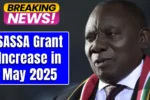Unexpected emergencies can strike anyone, anytime. Whether it’s a natural disaster, a sudden medical expense, or a crisis affecting your living situation, immediate financial relief can be crucial.
In Australia, Centrelink offers a $1,000 emergency assistance payment for eligible individuals and families who find themselves in urgent need. But what exactly is it, who qualifies, and how can you make sure you don’t miss out when you need it most? Here’s everything you need to know.
What is the $1,000 Emergency Assistance Payment?
The $1,000 emergency assistance from Centrelink is designed to provide swift financial relief to those experiencing serious hardship due to unforeseen events. It is often referred to under different names like the Crisis Payment or Special Benefit, depending on the circumstance. This support aims to cover essential expenses like food, clothing, housing, and basic utilities when people have no other means of immediate financial help.
The payment is a one-time support amount, not an ongoing benefit, and it can be a lifeline when every dollar counts. Understanding the specific criteria and application process ensures you can access it when needed.
Who is Eligible for the Payment?
Eligibility for Centrelink’s emergency assistance isn’t automatic; you must meet certain conditions. Generally, it applies to people facing severe financial hardship because of events such as natural disasters, domestic violence, or the loss of essential income.
Some key eligibility criteria include being an Australian resident or eligible visa holder, experiencing a life-changing event, and meeting Centrelink’s income and asset tests. You may also need to be already receiving a Centrelink payment or be eligible for one. Each situation is assessed individually, so the details you provide during the application are critical.
How to Apply for the $1,000 Emergency Assistance
Applying for Centrelink’s emergency assistance is straightforward but requires prompt action. Applications typically must be submitted within seven days of the event that caused the hardship. You can apply through your myGov account linked to Centrelink or by visiting a Centrelink service center if you need additional help.
When applying, be prepared to provide documents that support your claim. This might include police reports, hospital records, or letters from support agencies, depending on your circumstances. Remember, incomplete or delayed applications could mean missing out entirely, so act quickly.
Situations That Qualify for Immediate Help
Several different scenarios can make you eligible for the $1,000 payment. These can include:
- Surviving a major natural disaster without insurance coverage.
- Escaping a violent domestic situation and setting up a new home.
- Facing homelessness due to unexpected job loss or financial collapse.
- Being released from prison with no means of support.
Each of these situations comes with specific requirements, but the underlying theme is clear: if your safety, security, or health is at serious risk without immediate financial support, Centrelink’s emergency payment could be available to you.
Common Mistakes That Delay or Deny Payments
Many people unintentionally miss out on emergency payments by making avoidable mistakes. Failing to apply within the required time frame is the most common issue. Others submit incomplete applications, provide insufficient proof, or incorrectly assume they are not eligible.
It’s also vital to stay up to date with your Centrelink details. If your records are outdated, it could delay the assessment of your application. Taking the time to prepare in advance keeping documents handy and understanding the process can make all the difference when you’re facing an urgent situation.
How Fast Will You Receive the Money?
Centrelink aims to process emergency payments quickly, often within a few days if all documents are in order. However, the exact timing can vary based on demand, the complexity of your case, and whether additional information is needed.
If approved, the $1,000 payment is usually deposited directly into your nominated bank account, allowing you to access funds almost immediately to cover essential needs.
What Happens if You Are Not Eligible?
If your application is rejected, don’t lose hope. You have the right to request a review of the decision. Sometimes providing extra evidence or clarifying details can change the outcome. Additionally, Centrelink offers other forms of financial support, like the Special Benefit or Advance Payments, which might suit your situation better.
Reaching out to a Centrelink officer or a social worker attached to Services Australia can also help you explore alternative avenues for assistance.
Final Thoughts: Be Ready Before You Need It
Emergencies don’t come with warnings. Knowing about Centrelink’s $1,000 emergency assistance now means you’ll be better prepared if you or someone you love ever faces a serious crisis.
Time is critical in emergency situations, so understanding the process, eligibility, and pitfalls in advance could mean the difference between struggling alone and getting the help you urgently need.




